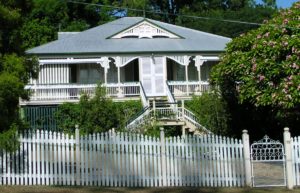According to Australian government statistics, up until 2003 less than 1% of the homes built in Australia were even remotely Energy Efficient. What exactly does that mean and how does anyone work out which homes are energy efficient and which ones aren’t. And why would anyone care anyway? Let’s put this in perspective. If the Australian population was surveyed and was asked whether they would buy a motor vehicle that used 50 L per 100 km, or say only got 5 miles to the gallon in the old money, it would be fairly conclusive what the results would be. Fuel efficiency is an important factor that is considered by the majority of people when purchasing a motor vehicle and seriously no one wants a car that guzzles fuel. Before the purchasing of a car, either new or used, people generally investigate to make sure that the proposed purchase meets suitable criteria. A fundamental consideration being that the proposed vehicle’s fuel economy be acceptable to the buyer. But how many people are interested enough or informed enough to check the fuel economy of a home whether they are buying one new or used?
 If less than 1% of the homes built in Australia are considered energy-efficient, then the remaining 99% are not considered energy-efficient. If they’re not energy-efficient, then they are wasting energy. Most homeowner’s choice of energy is electricity.
If less than 1% of the homes built in Australia are considered energy-efficient, then the remaining 99% are not considered energy-efficient. If they’re not energy-efficient, then they are wasting energy. Most homeowner’s choice of energy is electricity.
But does anyone really desire to live in a home that guzzles electricity?
Do you know how many miles per gallon your home gets, metaphorically speaking? Have you ever thought about it?
The energy efficiency of a home is not determined by some balding governmental bureaucrat who somehow had enough time to single-handedly, or with the team of equally folliclly challenged individuals, check the necessary characteristics of every house in Australia. Determining that information is a lot less tedious and a little more scientific.
What changed in 2003 when homes in Australia became a lot more energy efficient was the introduction of the Nationwide Home Energy Rating Scheme, acronymed to NatHERS.
All the States and Territories in Australia since then have uniform minimum building efficiency requirements. The requirements are quite detailed and can be found online by googling NCC which is the acronym for the National Construction Code. It includes requirements for multi residential, commercial, industrial and public buildings with amendments and minimum requirements for planning and drainage, consolidated performance requirements and amendments and etc, etc and etc. Having said that, NatHERS addresses all of those issues by using a choice of three modelling computer programs that rate the energy efficiency of a home out of 10.
It’s a star rating system. The more stars you get, the more energy efficient your home is. Each new home and major renovation has to score at least six stars out of a possible ten to be approved for construction.
Multi residential units require a minimum of a five-star rating.
That’s all well and good for new constructions, but how was it determined that 99% of the homes, built before 2003, (which includes the greater majority of Australian homes), are so energy inefficient?
The same Government sources advise that up until the introduction of NatHERS, 99% of the homes that had been built in Australia would achieve less than a one star rating.
It is therefore obvious that most of the homes in Australia are inefficient energy guzzlers. Something is being done about it now but how did this happen in the first place?
 Old habits are hard to break and generally people tend to do what they’ve always done. If you always do what you have always done, you will always get what you’ve always got. What we have got in Australia as a result, was a building industry that focused on cost and aesthetics.
Old habits are hard to break and generally people tend to do what they’ve always done. If you always do what you have always done, you will always get what you’ve always got. What we have got in Australia as a result, was a building industry that focused on cost and aesthetics.
Let’s face it, no one wants an ugly expensive house. The thermal efficiency of a home in the past has rarely been a serious consideration. When our European ancestors started to build in Australia, and you can see many examples in the capital cities, they built the way they had always built. Block buildings with steep roofs to stop the snow from piling up was very much the fashion. Whilst the buildings were comfortably familiar and aesthetically pleasing at the time, they were generally not suited to the climactic conditions of this Great Southern Land.
There are four solar zones for consideration for STC’s, (small scale technology certificates) which replaced the REC’s (renewable energy certificates) which determine the “rebate” a homeowner can receive for installing Solar Panels. These four zones have been determined because they have specific solar exposure characteristics.
 On top of that, NatHERS identifies a separate 8 climate zones and then another 69 sub climate zones within those 8. The buildings that were built by the Pioneers were not designed to be family functional within those climate zones. In recent times, cost and aesthetics’ have been the major considerations for home design. Gone are the days of building hardwood homes on stumps all over the country. Whilst these buildings are a legacy they will in time go the way of the dodo and make way for more energy efficient designed homes. To be continued …….
On top of that, NatHERS identifies a separate 8 climate zones and then another 69 sub climate zones within those 8. The buildings that were built by the Pioneers were not designed to be family functional within those climate zones. In recent times, cost and aesthetics’ have been the major considerations for home design. Gone are the days of building hardwood homes on stumps all over the country. Whilst these buildings are a legacy they will in time go the way of the dodo and make way for more energy efficient designed homes. To be continued …….
If you want to know more and get access to the full report now click here >>>LEARN MORE>>>
John Lynn
